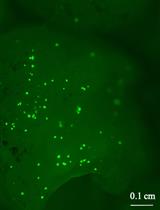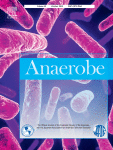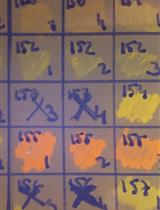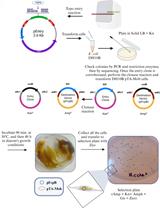- EN - English
- CN - 中文
Conjugation Protocol Optimised for Roseburia inulinivorans and Eubacterium rectale
食葡糖罗斯拜瑞氏菌和直肠真杆菌结合的优化方案
发布: 2020年04月05日第10卷第7期 DOI: 10.21769/BioProtoc.3575 浏览次数: 5153
评审: Alba BlesaSanjeeva S MetikalaCristina Colomer-Winter

相关实验方案

从不同难降解细菌中高质量分离质粒的方案:农杆菌、根瘤菌和苏云金芽孢杆菌
Preshobha Kodackattumannil [...] Khaled M. A. Amiri
2023年08月05日 2127 阅读
Abstract
Roseburia and Eubacterium species of the human gut microbiota play an important role in the maintaince of human health, partly by producing butyrate, the main energy source of our colonic epithelial cells. However, our knowledge of the biochemistry and physiology of these bacteria has been limited by a lack of genetic manipulation techniques. Conjugative transposons previously introduced into Roseburia species could not be easily modified, greatly limiting their applicability as genetic modification platforms. Modular plasmid shuttle vectors have previously been developed for Clostridium species, which share a taxonomic order with Roseburia and Eubacterium, raising the possibility that these vectors could be used in these organisms. Here, we describe an optimized conjugation protocol enabling the transfer of autonomously replicating plasmids from an E. coli donor strain into Roseburia inulinivorans and Eubacterium rectale. The modular nature of the plasmids and their ability to be maintained in the recipient bacterium by autonomous replication makes them ideal for investigating heterologous gene expression, and as a platform for other genetic tools including antisense RNA silencing or mobile group II interon gene disruption strategies.
Keywords: Conjugation (结合)Background
Roseburia and Eubacterium species are among the most abundant bacteria in the human gut microbiota (Zhernakova et al., 2016), impacting human health by utilising dietary and host derived polysaccharides (Scott et al., 2006 and 2011; Cockburn et al., 2015; Sheridan et al., 2016) and producing the health promoting metabolite butyrate as a fermentation end product (Duncan et al., 2002 and 2006). Additionally, these species are capable of modulating host immunity via flagella (Neville et al., 2013). The lack of genetic modification techniques for these organisms has prevented a more complete understanding of the complex interactions between these bacteria and their human host.
Previously, conjugative transposons were successfully transferred into Roseburia inulinivorans from Eubacterium cellulosolvens and Clostridium cf. saccharolyticum (Scott et al., 2008). These large, novel mobile genetic elements could not be easily modified and thus were a suboptimal platform for detailed genetic modification. This work did however illustrate that conjugative mating was possible between Lachnospiraceae bacteria including Roseburia species. The development of easily modified conjugative plasmids for clostridial species (Purdy et al., 2002; Heap et al., 2009) raised the possibility that these techniques could be adapted for Roseburia and Eubacterium species.
The detailed protocol presented here is based on procedures established in Sheridan et al. (2019). In this work, the different conjugative plasmids developed for use in Clostridium species (Heap et al., 2009) were tested for transferability into the Roseburia and Eubacterium rectale species. Plasmid pMTL83151 was successfully transferred into two strains of E. rectale, while pMTL83151 and pMTL82151 were transferred into Roseburia inulinivorans A2-194. Transfer frequencies of 10-6-10-8 per potential recipient were obtained. These frequencies are similar to those observed when suicide vectors were introduced into other Gram-positive bacteria (Williams et al., 1990; Aquino de Muro and Priest, 2000). The ability to add exogenous DNA to bacterial species opens up opportunities for genetically manipulation, including knockout mutagenesis. Alternatively, these plasmids could be modified as expression vectors for mobile group II interon gene disruption strategies, as has been demonstrated in several clostridial species (Heap et al., 2007). Additionally, Plasmid pMTL83151 was shown to be a suitable vector for heterologous gene expression (Sheridan et al., 2019), producing an enzymatically active Streptococcus glycoside hydrolase in both species and thus proving the utility of this technique in studying researcher-selected functional gains in these important bacteria. The protocol below is a stepwise guide to introducing foreign DNA to these bacteria.
Materials and Reagents
- Pipette tips
- Cuvettes (Bio-Rad, catalog number: 1652083 )
- Petri dishes (Greiner Bio-One, catalog number: 633180 )
- Glass Pasteur pipettes (Fisher Scientific, catalog number: FB50261 )
- Nylon membranes (Roche, catalog number: 11417240001 )
- X-ray film (Fujifilm) (Fisher Scientific, catalog number: 12735325 )
- 50 ml conical centrifuge tubes (Corning, catalog number: 10038980 )
- Strains (Table 1)
- Plasmids (Table 1)
Note: Modular plasmids can be obtained from CHAINbiotools (http://clostron.com/pMTL80000.php). - Primers (Table 2)
- PBS tablets (Sigma, catalog number: P4417 )
- Chloramphenicol (Sigma-Aldrich, catalog number: C0378 ) stock solution 10 µg/ml, stored at -20 °C
- HindIII restriction endonuclease (NEB, catalog number: R0104S )
- Wizard genomic DNA Purification kit (Promega, catalog number: A1120 )
- DIG High Prime DNA Labelling and Detection Starter Kit II (Roche, catalog number: 11585614910 )
- PCR reagents (Taq Polymerase kit Bioline, catalog number: BIO-21040 and dNTP’s Promega, catalog number: U1240 )
- Dipotassium phosphate, K2HPO4 (Fisher Scientific, catalog number: P/5240/53)
- Potassium dihydrogen phosphate, KH2PO4 (Fisher Scientific, catalog number: P/4800/60)
- Ammonium sulfate, (NH4)2SO4 (Fisher Scientific, catalog number: A/6480/53)
- Sodium chloride, NaCl (Fisher Scientific, catalog number: S/3160/53)
- Magnesium sulfate, MgSO4 (Sigma-Aldrich, catalog number: M7506 )
- Calcium chloride, CaCl2 (Sigma-Aldrich, catalog number: C1016 )
- Acetic acid (Fisher Scientific, catalog number: A/10400/PB17)
- Propionic acid (Sigma-Aldrich, catalog number: P1386 )
- n-Valeric acid (Sigma-Aldrich, catalog number: V9759 )
- Iso-Valeric acid (Sigma-Aldrich, catalog number: I7128)
- Iso-Butyric acid (Sigma-Aldrich, catalog number: I1754)
- Biotin (Sigma-Aldrich, catalog number: B4501 )
- Cobalamin (Sigma-Aldrich, catalog number: V2876 )
- p-Aminobenzoic acid (Sigma-Aldrich, catalog number: A9878 )
- Folic acid (Sigma-Aldrich, catalog number: F7876 )
- Pyridoxamine (Sigma-Aldrich, catalog number: P9755 )
- Potassium hydroxide, KOH (Sigma-Aldrich, catalog number: P5958 )
- Ethanol 95% (Fisher Scientific, catalog number: E/0650DF/17 )
- Haemin (Sigma-Aldrich, catalog number: H5533 )
- Bacto tryptone (BD Diagnostics Systems, catalog number: 211705 )
- Yeast Extract (BD Diagnostics Systems, catalog number: 212750 )
- Potassium chloride, KCl (Sigma-Aldrich, catalog number: P3911 )
- Magnesium chloride hexahydrate, MgCl2·6H2O (Sigma-Aldrich, catalog number: M9272 )
- Magnesium sulfate heptahydrate, MgSO4·7H2O (Sigma-Aldrich, catalog number: 230391 )
- Bacto casitone (BD Diagnostics Systems, catalog number: 225930 )
- Sodium bicarbonate, NaHCO3 (Sigma-Aldrich, catalog number: S5761 )
- Glucose (Fisher Scientific, catalog number: G/0500/53)
- Soluble starch (Sigma-Aldrich, catalog number: S2004)
- Cellobiose (Sigma-Aldrich, catalog number: C7252 )
- Resazurine (Sigma-Aldrich, catalog number: R2127)
- L-cysteine (Sigma-Aldrich, catalog number: C1276 )
- Thiamin (Sigma-Aldrich, catalog number: T1270 )
- Riboflavin (Sigma-Aldrich, catalog number: R9504 )
- Gas mix 10% Carbon Dioxide, 10% Hydrogen balance Nitrogen (Anaerobic) Cylinder (BOC, catalog number: 290564-L)
- Agar (Oxoid, catalog number: LP0011 )
- Resazurin solution (see Recipes)
- Anaerobic phosphate buffered saline (PBS) (see Recipes)
- Mineral solution 1 (see Recipes)
- Mineral solution 2 (see Recipes)
- Short chain fatty acid solution (see Recipes)
- Vitamin solution 1 (see Recipes)
- Vitamin solution 2 (see Recipes)
- Haemin solution (see Recipes)
- SOC (see Recipes)
- LB (see Recipes)
- LA (see Recipes)
- YCFAGSC and AMM (see Recipes)
Equipment
- Pipettes Gilson P1000 (Gilson, catalog number: F123602 )
- Pipettes Gilson P200 (Gilson, catalog number: F123601 )
- Pipettes Gilson P20 (Gilson, catalog number: F123600 )
- Pipettes Gilson P2 (Gilson, catalog number: F144801 )
- Concept Plus Anaerobic Workstation, Ruskinn Technology
- Hungate tubes (Sciquip, catalog number: 2047-00125)
- Hungate lids butyl rubber septa (Sciquip, catalog numbers: 2047-11600 and 2047-16000)
- Wheaton bottles (Merck, catalog number: 33110-U )
- CO2 hooks (made in-house) and CO2 piped gas supply
- Shaking Incubator for E. coli growth (Sanyo Orbital incubator)
- Static Incubator for anaerobic bacteria (Sciquip incu-160S)
- Gene pulser (Bio-Rad, model: 1652078)
- Platform rocker (Stuart, model: STR6)
- UV-linker, Bio-Rad GS Gene linker UV chamber (UVP CL-1000 Ultraviolet Crosslinker)
- Hybridizer (UVP laboratory products HB 1000 hybridizer)
- Blot transfer pump (Hybaid Vacu-aid blot processing pump, DA7C.VAC/T)
- Centrifuge (Jouan MR1822)
- Transilluminator (UVtec BXT-20.L)
Procedure
文章信息
版权信息
© 2020 The Authors; exclusive licensee Bio-protocol LLC.
如何引用
Sheridan, P. O., Martin, J. C. and Scott, K. P. (2020). Conjugation Protocol Optimised for Roseburia inulinivorans and Eubacterium rectale. Bio-protocol 10(7): e3575. DOI: 10.21769/BioProtoc.3575.
分类
微生物学 > 异源表达系统 > 非模式物种
微生物学 > 微生物遗传学 > 质粒
分子生物学 > DNA > 接合
您对这篇实验方法有问题吗?
在此处发布您的问题,我们将邀请本文作者来回答。同时,我们会将您的问题发布到Bio-protocol Exchange,以便寻求社区成员的帮助。
提问指南
+ 问题描述
写下详细的问题描述,包括所有有助于他人回答您问题的信息(例如实验过程、条件和相关图像等)。
Share
Bluesky
X
Copy link


.jpg)









